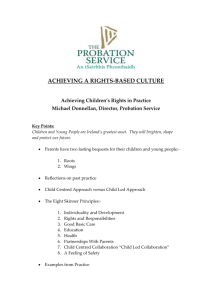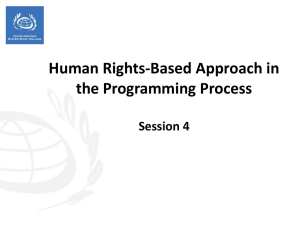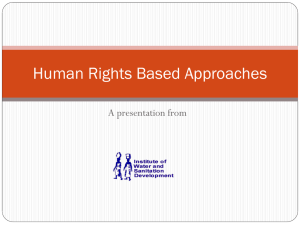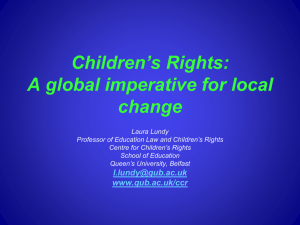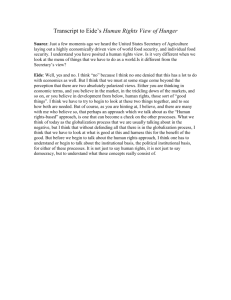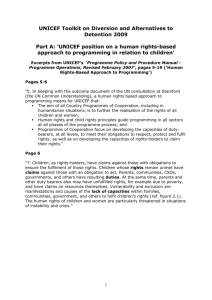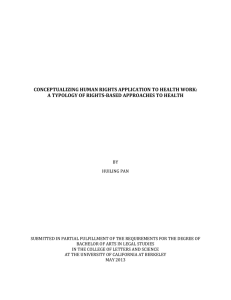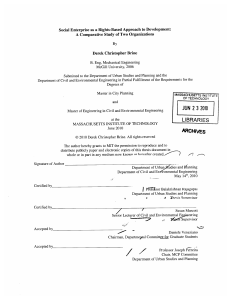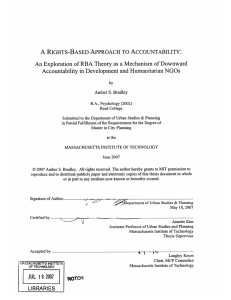Rights-Based Approach
advertisement
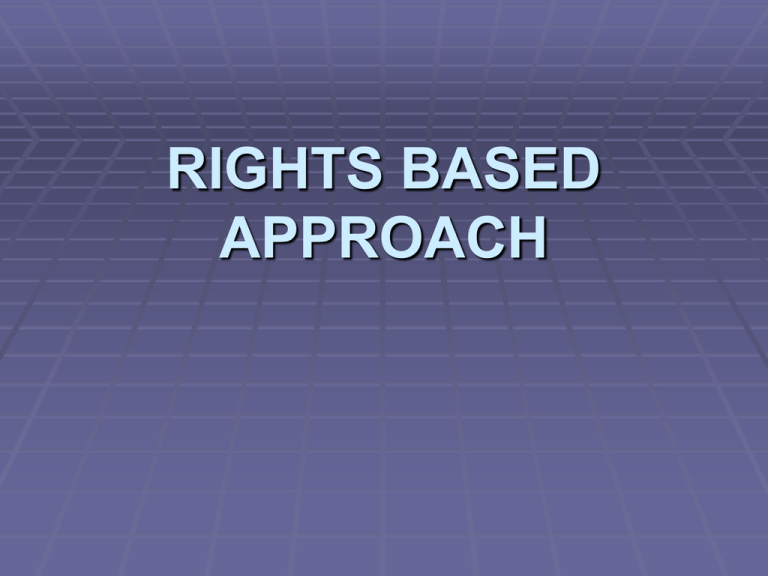
RIGHTS BASED APPROACH Trends in the Human Rights Tradition From focus on civil and political rights to broader concern with all rights- economic, social and cultural rights From a punitive to positive ethos of constructive dialogue and supports From poverty alleviation as merely a development issue to poverty eradication as a matter of social justice and dignity. From state-centered approach to participatory, multi-actor approaches involving media, corporation, communities and individuals From national to international global accountability Principles of the rights-based approach ??????? (1) Programs based on the international human rights standards and norms RBA Program UDHR Bills of Rights ICCPR/ICESCR International Conventions CEDAW, CRC, CAT, Migrant, Refugees Declaration on Development, Indigenous People, Minority (2) The goal is to bring about the realization of the rights of the people It is differ from partial and time-bound development targets. A rights-based goals is only achieved when all people enjoy the right. (3) Right based approach aims to enable claim holders to claim their rights and duty bearers to meet their obligations under international law Duty bearers Fulfill their obligation Rights Holder claims their rights The duty bearers 1.The primary duty-bearer is the government At national level State level Local level 2.The secondary duty-bearers are private individuals and institutions but the primary responsibility remains with 1 (4) Working together towards a common goal Not based on one organization to accomplish on its own. Required work at different levels, by different groups using variety of approaches. Joint analysis, common strategies and collaboration (5) The approach is not only about what you achieve, but also how you achieve it. working in partnership, putting poor people at the centre, transforming the power relations that keep poor people poor, and recognizing the centrality of unequal gender relations in this process. WHAT ARE THE COMPONENTS OF THE RIGHTS-BASED APPROACH? 1. ANALYSIS BASED ON THE REALIZATION OF HUMAN RIGHTS By analyzing each right By analyzing those responsible 2. MEANINGFUL PARTICIPATION AT EACH STAGE 3. OBJECTIVES AND GOALS BASED ON HUMAN RIGHTS 4. MEASURING OUTCOMES IN HUMAN RIGHTS TERMS 5. UTILIZING MECHANISMS OF ACCOUNTABILITY Needs based approach People deserve help Government ought to do something but no one has definite obligation People can participate in order to improve service delivery Given scarce resources sme people may have to be left out Each piece of work has its own goals but there is no unifying overall purpose Certain groups have technical expertise to meet people’s need Looks at specific, immediate situation Rights-based approach •People are entitled to help •Governments have binding legal and moral obligation •People are active participants by right •All people have the same rights to fulfill their potential •There is an overarching goal to which all work contributes •All groups can play a role in achieving their rights •Analyze root causes The human rights-based approach: difference one Based on claims not on charity. Thus the approach focuses on Exclusion Inequality Discrimination Social structures Policy change The human rights-based approach: difference two The human rights-based approach is process-based Rule of law, but not merely legal: non-legal, social, political processes Advocacy Long-term alliances Human rights within each organization PANEL ANALYSIS Participation Accountability Non-discrimination Empowerment Links to human rights standards How to implement a RBA to education Building from the grassroots to the national and international, understanding that each level has distinct but complementary role to play; Linking with others, including education coalitions, social movements, teachers’ unions, the media and government as appropriate, based on the understanding that we should be working together, complementing each others’ work, not competing with each other; or wasting resources through duplication of work; Taking a holistic approach, focusing on education as an entry point but recognizing that there are many issues which impact on people’s ability to access education and that these are complex; Exploring the roles of different stakeholders, from local cultural custodians to the international financial institutions, all of whom need to be included in the struggle for education rights; How to implement a RBA to education (Con) Recognizing the centrality of gender and power relations and their impact on people’s ability to access education or be involved in transforming education, and therefore prioritizing work in this area; Using participatory methods to actively engage rights-holders in influencing, designing and monitoring education policy and delivery, ensuring that complex information is translated and repackaged tomake it more accessible at the grassroots; Learning from and documenting experiences, and sharing these with other practitioners so that practice can continually improve and evolve; Being honest about achievements, not over claiming success and recognizing that there are many different forces at play, and other initiatives which influence people’s reality. It is also important to be open about challenges and failures, which can be great for learning and strengthening practice. Therefore, at the local level people should be Reflecting on and analyzing their context, drawing on local realities and information accessed from partner organisations at national and international levels; Developing strategic action plans, targeting individual, community and local actions, based on in-depth analysis; Building partnerships, mobilizing others and developing networks; Researching and generating evidence (which can be used locally and nationally); Communicating at local, national and international levels, through written documentation, as well as using oral and visual media; Linking with government, media and other powerful actors.
